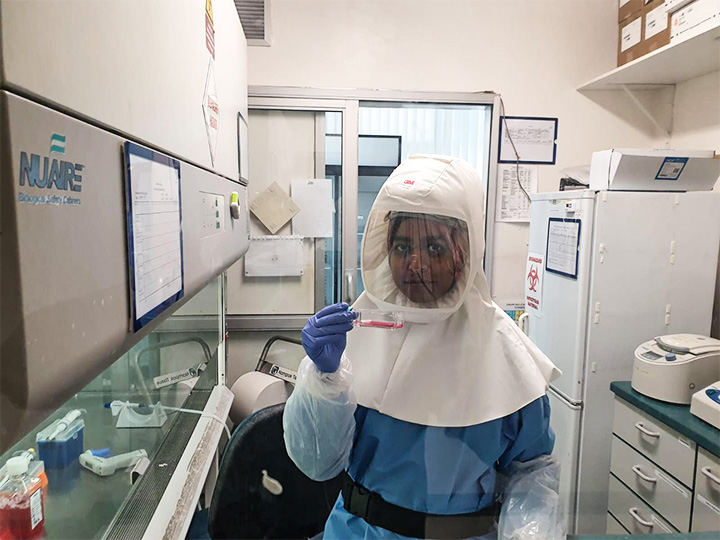Researchers at the University of Stellenbosch and University of the Western Cape have successfully obtained the country’s first known laboratory isolate of SARS-Coronavirus 2.
Having this isolate means diagnostic labs will be able to be supplied with large amounts of virus genetic material that is identical in genetic makeup and concentration.
“Having a pure culture of the virus opens doors for research in South Africa,” said Dr Tasnim Suliman of UWC. “Currently, much of the data that exists on this novel virus is based on detecting the genetic material, which is still possible after the virus is ‘dead’, and does not confirm whether the virus is viable and able to cause infection. Now we can experiment on the live virus and observe how it actually behaves in the lab.”
Dr Suliman did impress that this doesn’t mean the lab “created” the virus. Rather, they provided the virus the right conditions to grow in a space where they harvested a large amount to perform research.
“Although South Africa is the leading African country in science and technology, we remain a resource-limited setting by developed world standards,” Suliman said. “Therefore, it is a tremendous advantage for us to make this virus available and guide others on how to safely handle the virus locally.”
Dangerous work
Growing such a virus does not come without its dangers, however. It can only be done in a BSL-3 lab which is equipped to protect those working from contracting the virus itself. It is strictly controlled and those entering have to go through a significant process to get inside.
To gain access to the workspace of the BSL-3, one needs to enter through three doors in succession – each preparing you for the next phase. The multiple doors, together with the outward airflow called negative pressure, prevent any aerosols from escaping into general spaces.
“After the first door closes behind you when entering the BSL3, the door to stage 2 is released – a room where protective gear is worn: two pairs of gloves, boots, a back-closing gown or overalls, sleeve covers, and my personal favourite, the powered respirator that filters the air you inhale,” Dr Suliman comments. “The battery pack and filter are worn around the waist and a pipe connects it to the headpiece that fits snugly around the head and face. You are now ready to enter the third door to slay coronaviruses!”
Dr Suliman took on this risky task as she is the only known South African who has ever grown a BSL-3 coronavirus before.
“It was scary at first,” Dr Suliman says. “I was acutely aware that all it would take is a suit malfunction and a badly-timed mishap to become infected. But with training and regularly working in the BSL-3 lab, an automatic sense of hyper-alertness develops. You get used to it.”
Image: UWC

